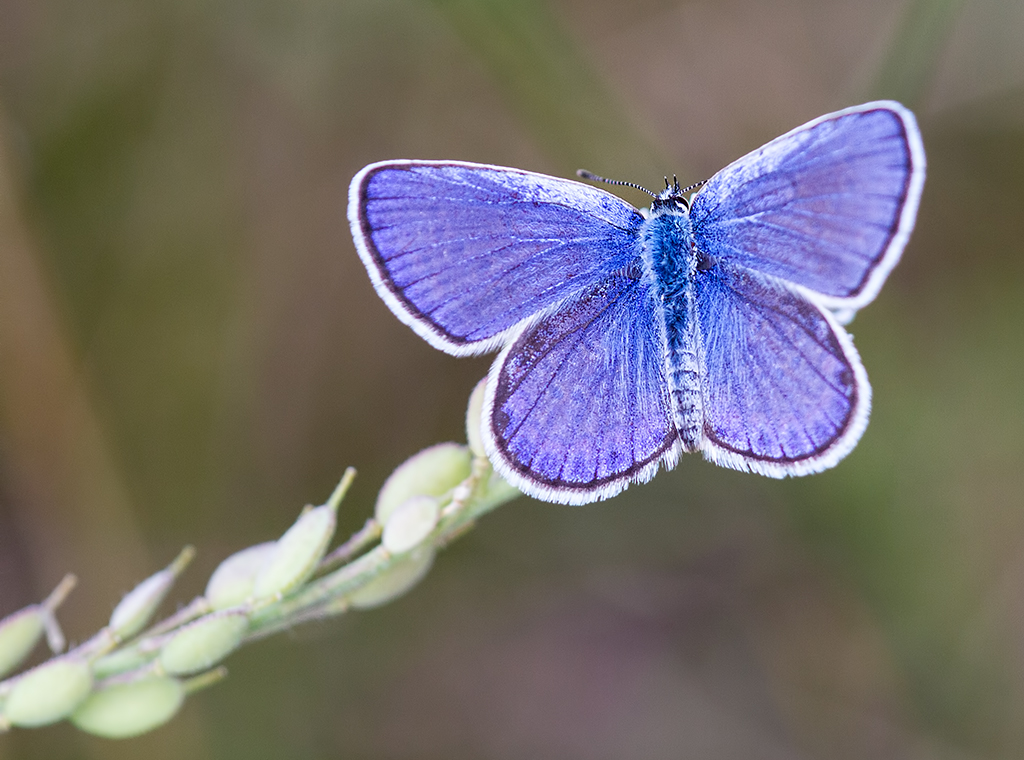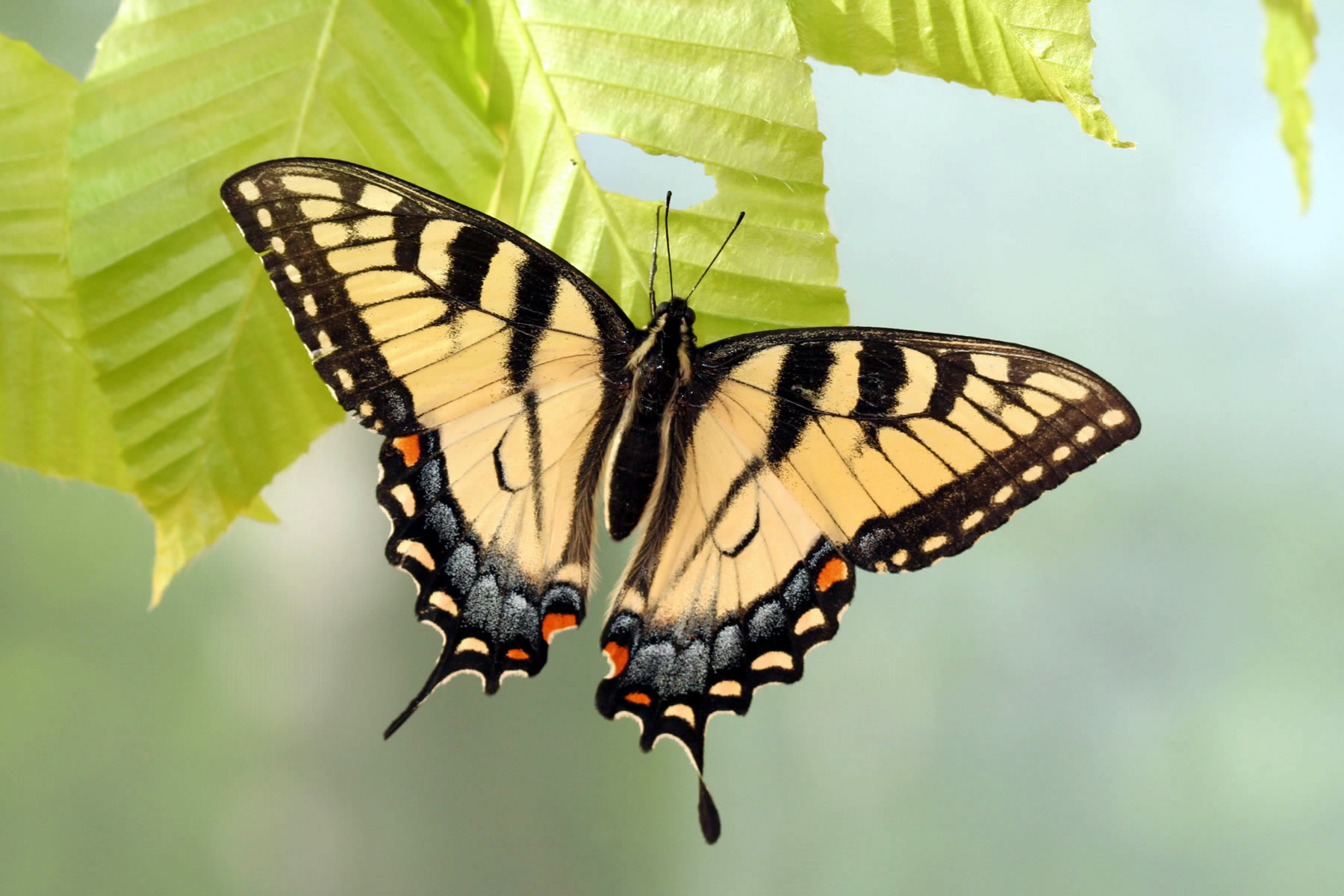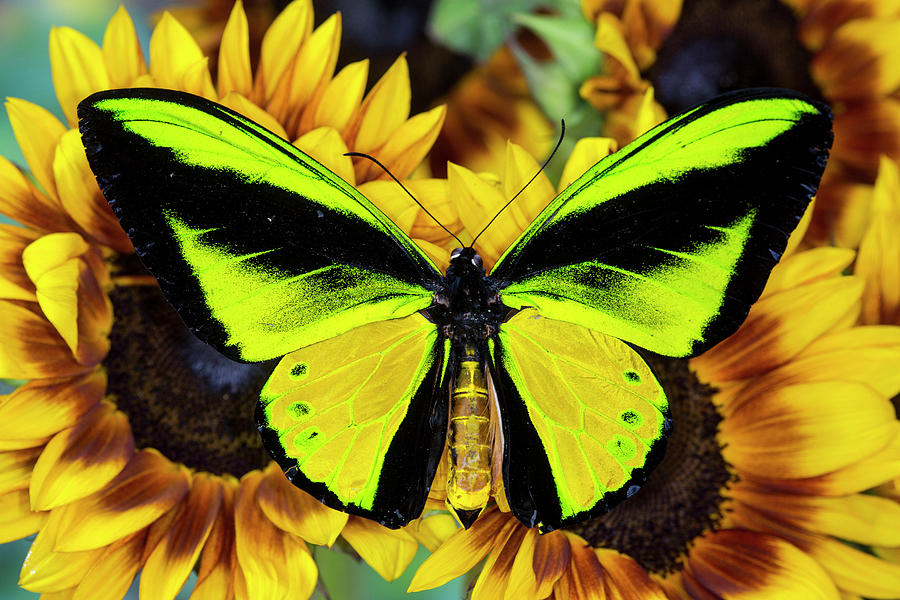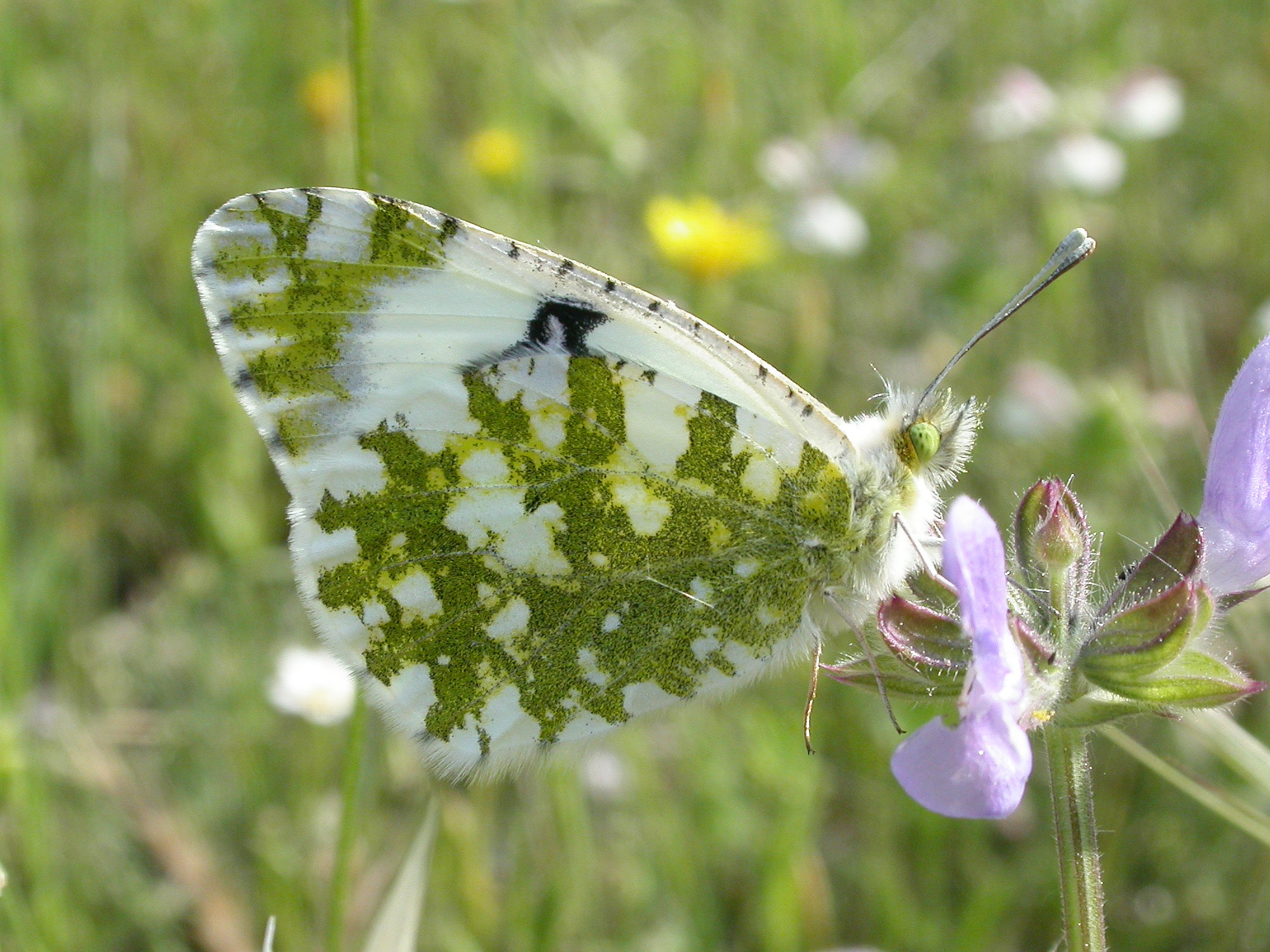Butterflies are one of the most beautiful and fascinating insects in the world. They are known for their large, colorful wings and their fluttering flight. There are almost 20,000 species of butterflies in the world, and each species has its own unique characteristics and features.
In this article, we will explore 10 types of butterflies, including the Monarch, Blue Morpho, and Karner Blue. We will also learn about the butterfly families and their classification.
You are reading: 10 Types Of Butterfly
Whether you are a butterfly enthusiast or just curious about these amazing creatures, this article will provide you with an introduction to the world of butterfly watching.

10 Types Of Butterfly
Appalachian Tiger Swallowtail

The Appalachian Tiger Swallowtail (Papilio appalachiensis) is a species of swallowtail butterfly found in eastern North America, particularly in the Appalachian Mountains. It is a hybrid of two other Papilio species, Papilio canadensis and Papilio glaucus, with which it shares many characteristics.
The butterfly’s wings are normally yellow and contain black patterns, and their wingspans range from 86 to 115 mm. The Appalachian Tiger Swallowtail is very similar to the Eastern Tiger Swallowtail, but it is larger and has slightly angular and vertical black stripes.
The hindwings of males are triangular. The Appalachian Tiger Swallowtail flies only in spring and only in the mountains, unlike the similar Eastern Tiger Swallowtail, which is found throughout the warmer months and in other areas.
According to the Alabama Butterfly Atlas, the Appalachian Tiger Swallowtail has a wingspan of 3½ – 4½ inches (8.6 – 11.5 cm) .
Blue Morpho Butterfly
The Blue Morpho Butterfly (Morpho menelaus) is a large butterfly species found in Central and South America. It is one of the largest butterflies in the world, with a wingspan ranging from 5 to 8 inches.
The butterfly’s wings are bright blue and edged with black, and they have two clubbed antennas, two forewings, two hindwings, six legs, and three body segments. The males’ wings are broader than those of the females and appear to be brighter in color.
The blue color of the butterfly’s wings is not due to pigment, but rather to the microscopic diamond-shaped scales on the upper side of their wings, which are organized into a complex layered structure that causes the incoming light to diffract and interfere with each other, resulting in the perception of the color blue.
The Blue Morpho Butterfly inhabits tropical rainforests, spending most of its time in the understory. They are known for their spectacular blue color on the topside of their wings and yellow eyespots on the brown underside of their wings, which are effective in warding off predators.
Eastern Orange Albatross
Read more : Top 8 Fastest Water Animals
The Eastern Orange Albatross (Appias zarinda) is a butterfly species belonging to the family Pieridae. Here are some key facts about this butterfly:
– The Eastern Orange Albatross is found in Sulawesi and the Maluku Islands in Indonesia.
– The butterfly has a bright orange color with pointed wings.
– It is a large butterfly species, but its wingspan is not specified in the search results.
– The Eastern Orange Albatross is also known as Appias zarinda.
– The butterfly is mounted in handmade wooden frames and sold as a decorative item.
Overall, the Eastern Orange Albatross is a beautiful butterfly species with a bright orange color that makes it a popular decorative item.
Goliath Birdwing

The Goliath Birdwing (Ornithoptera goliath) is a species of birdwing butterfly found in New Guinea. Here are some key facts about this butterfly:
– The Goliath Birdwing is the second largest butterfly in the world, after the Queen Alexandra’s birdwing.
– The butterfly’s wingspan can reach up to 11 inches (28 cm) in males and up to 12 inches (30 cm) in females.
– The Goliath Birdwing has black forewings with a green costal edge and a large green triangle beyond the medium black bar. The hindwings are golden with a black edge bordered basally by a thin green line.
– The butterfly is sexually dimorphic, with males having brighter colors and larger wings than females.
– The Goliath Birdwing is listed on CITES Appendix II, which means that international trade of this species is regulated.
– The butterfly is a popular species among collectors and is sold as a decorative item.
Overall, the Goliath Birdwing is a fascinating butterfly species known for its large size and striking colors.
Sleepy Orange
The Sleepy Orange (Abaeis nicippe) is a butterfly species found in North America, the West Indies, Costa Rica, and Belize. Here are some key facts about this butterfly:
– The Sleepy Orange has a wingspan of 1½ – 2 inches (3.5 – 4.8 cm).
– The butterfly is orange in males and yellow-orange in females, with irregular black borders.
– The upperside of the wings has wide black borders, and the forewing costal margin has a small, narrow black spot that looks like a closed eye.
– The underside of the wings varies seasonally, with summer forms being bright yellow with brick-red markings and winter forms being browner and more heavily marked.
– The Sleepy Orange is almost never seen with wings open.
– The butterfly is found in or around old fields, roadsides, woods edges, swamps, wet meadows, open woodlands, margins of ponds, waterways, and valleys.
– The Sleepy Orange is a very common butterfly species with a flight season throughout the year and is found almost everywhere in North America.
Overall, the Sleepy Orange is a small but beautiful butterfly species with orange and black colors that make it easy to identify.
Creamy Marblewing

The Creamy Marblewing (Euchloe ausonides), also known as the Large Marble or Ausonides Marble, is a butterfly species found in western North America. Here are some key facts about this butterfly:
– The Creamy Marblewing lays eggs on the terminal flower buds of plants in the mustard family, including introduced Eurasian species, and the larvae feed on the buds, flowers, and fruit of these plants.
– The butterfly has a wingspan of 1.5 – 2 inches (3.8 – 5.1 cm).
– The Creamy Marblewing is medium-sized, with white scales scattered in the forewing and a black pattern on the tip of the forewing.
– The underside of the hindwing has compact green marbling against a white background.
– The butterfly’s large round eye is bright green, and the furry scales on its head are white.
– The Creamy Marblewing is often called the Large Marble because it tends to be larger than other Euchloe butterflies.
– The butterfly is a common species in western North America, but its population has declined in California since the 1980s, especially in the Central Valley and the Bay Area.
Overall, the Creamy Marblewing is a beautiful butterfly species with a white and black color pattern that makes it easy to identify.
Small Copper
The Small Copper (Lycaena phlaeas), also known as the American Copper or Common Copper, is a butterfly species belonging to the family Lycaenidae. Here are some key facts about this butterfly:
– The Small Copper has a wingspan of 1.5 – 2 inches (3.8 – 5.1 cm).
– The butterfly is bright copper in males and orange-brown in females, with black spots and black borders.
– The underside of the wings is gray-brown with black spots and a white fringe.
– The Small Copper is a fast-flying butterfly that is usually seen in ones and twos, but in some years, large numbers may be found at good sites.
– The butterfly is found in a wide variety of sunny open habitats, such as woodland rides, hills, commons, and grassy coastal areas.
– The Small Copper is a widespread species and a common butterfly in the UK.
– The butterfly’s caterpillars feed on the leaves of plants in the buckwheat family, including sheep sorrel, curled dock, and Oxyria digyna.
Overall, the Small Copper is a beautiful butterfly species with bright copper colors that make it easy to identify.
Karner Blue
The Karner Blue (Lycaeides melissa samuelis) is a small butterfly species with a wingspan of about one inch. Here are some key facts about this butterfly:
– The Karner Blue is an endangered species of small blue butterfly found in some Great Lakes states, small areas of New Jersey, the Capital District region of New York, and southern New Hampshire in the United States.
– The butterfly’s wings are blue on the upper side with a narrow black border and white fringes. The underside of both sexes is gray with a continuous band of orange crescents along the edges of both wings and with scattered black spots circled with white.
– The Karner Blue butterfly occurs in portions of eastern Minnesota, Wisconsin, Michigan, and New York. Reintroductions have been initiated in Ohio, Indiana, Illinois, and New Hampshire.
– The butterfly’s caterpillars only feed on wild blue lupine leaves, leaving behind “windowpanes” or a leaf “skeleton”. Wild blue lupines are found in the sandy soils.
– The first Karner Blue butterfly flight generally occurs sometime between mid-May and mid-June, with males typically appearing earlier than females. First flight females lay the vast majority of their eggs on wild lupine. These eggs develop into the adults of the second Karner Blue butterfly flight, which occurs from mid-July to mid-August.
Overall, the Karner Blue is a beautiful butterfly species that is unfortunately endangered due to habitat loss and fragmentation. Efforts are being made to conserve and restore the butterfly’s habitat to ensure its survival.
Monarch
Read more : The World’s Top 10 Non Traditional Pets
The Monarch Butterfly (Danaus plexippus) is a milkweed butterfly in the family Nymphalidae. Here are some key facts about this butterfly:
– The Monarch Butterfly is one of the most familiar and iconic butterflies in North America.
– The butterfly’s wings are bright orange with black veins and white spots along the edges. Males have distinguishing black dots along the veins of their wings and are slightly bigger than females.
– The Monarch Butterfly is known for its marvelous migratory phenomenon, traveling between 1,200 and 2,800 miles or more from the northeast United States and southeast Canada to the mountain forests in central Mexico, where they hibernate from the beginning of November to mid-March.
– The Monarch Butterfly is the only butterfly known to make a two-way migration like birds do.
– The butterfly’s brilliant coloring tells predators that it is poisonous, as it gets its toxins from a plant called milkweed, which is its only food source in the caterpillar stage.
– The Monarch Butterfly exhibits the most highly evolved migration pattern of any known species of butterfly or moth and perhaps any known insect.
– The Monarch Butterfly is facing threats to its survival, including habitat loss, climate change, and pesticide use.
Overall, the Monarch Butterfly is a beautiful and iconic butterfly species that is known for its incredible migration and its importance as a pollinator.
American Snout
The American Snout (Libytheana carinenta) is a butterfly species belonging to the subfamily Libytheinae in the brush-footed butterfly family, Nymphalidae. Here are some key facts about this butterfly:
– The American Snout is found in both North and South America.
– The butterfly has elongated mouthparts (labial palpi) that give the appearance of a long “nose” or “snout”.
– The American Snout is the only species of snout butterfly in North America.
– The butterfly’s wings are patterned black-brown with white and orange markings, and the forewings have a distinctive squared-off, hook-like (falcate) tip.
– The American Snout spends winter in the adult stage.
– The butterfly’s larval host plants are Celtis species, on which the eggs are laid singly.
– The American Snout is a small butterfly species, with a wingspan of 1.25 – 2 inches (3.5 – 5 cm).
– The butterfly is often found hanging upside down under a twig, taking advantage of its superb camouflage to make it nearly invisible.
Overall, the American Snout is a unique and interesting butterfly species with elongated mouthparts that give it a distinctive appearance.
FAQS
1. How many species of butterflies are there?
There are approximately 20,000 species of butterflies in the world.
2. What are some common butterfly species?
Some common butterfly species include the Monarch, Blue Morpho, Eastern Orange Albatross, and Sleepy Orange.
3. What is the difference between a butterfly and a moth?
Butterflies and moths are both insects in the order Lepidoptera, but they have some differences. Butterflies are typically active during the day, have slender bodies, and have clubbed antennae. Moths are typically active at night, have stout bodies, and have feathery or comb-like antennae.
4. What do butterflies eat?
Butterflies feed on nectar from flowers, and some species also feed on tree sap, rotting fruit, and animal dung.
5. How do butterflies protect themselves from predators?
Butterflies use a variety of methods to protect themselves from predators, including camouflage, mimicry, and warning coloration. Some species are also poisonous and have bright colors to warn predators not to eat them.
6. How do butterflies fly?
Butterflies fly by flapping their wings in a figure-eight pattern, which allows them to generate lift and stay aloft. They also use their wings to steer and change direction.
7. Why are butterflies important?
Butterflies are important pollinators, helping to fertilize plants and ensure their survival. They are also an important part of the food chain, providing food for birds and other animals.
8. What threats do butterflies face?
Butterflies face a number of threats, including habitat loss, climate change, pesticide use, and invasive species. Some butterfly species are also endangered due to these threats.
9. How can I attract butterflies to my garden?
You can attract butterflies to your garden by planting nectar-rich flowers, providing a water source, and creating a sunny, sheltered habitat with host plants for caterpillars.
10. How can I help conserve butterfly populations?
You can help conserve butterfly populations by supporting conservation efforts, reducing pesticide use, planting native plants, and creating butterfly habitats in your community.
Source: https://petstutorial.com
Category: Animals










